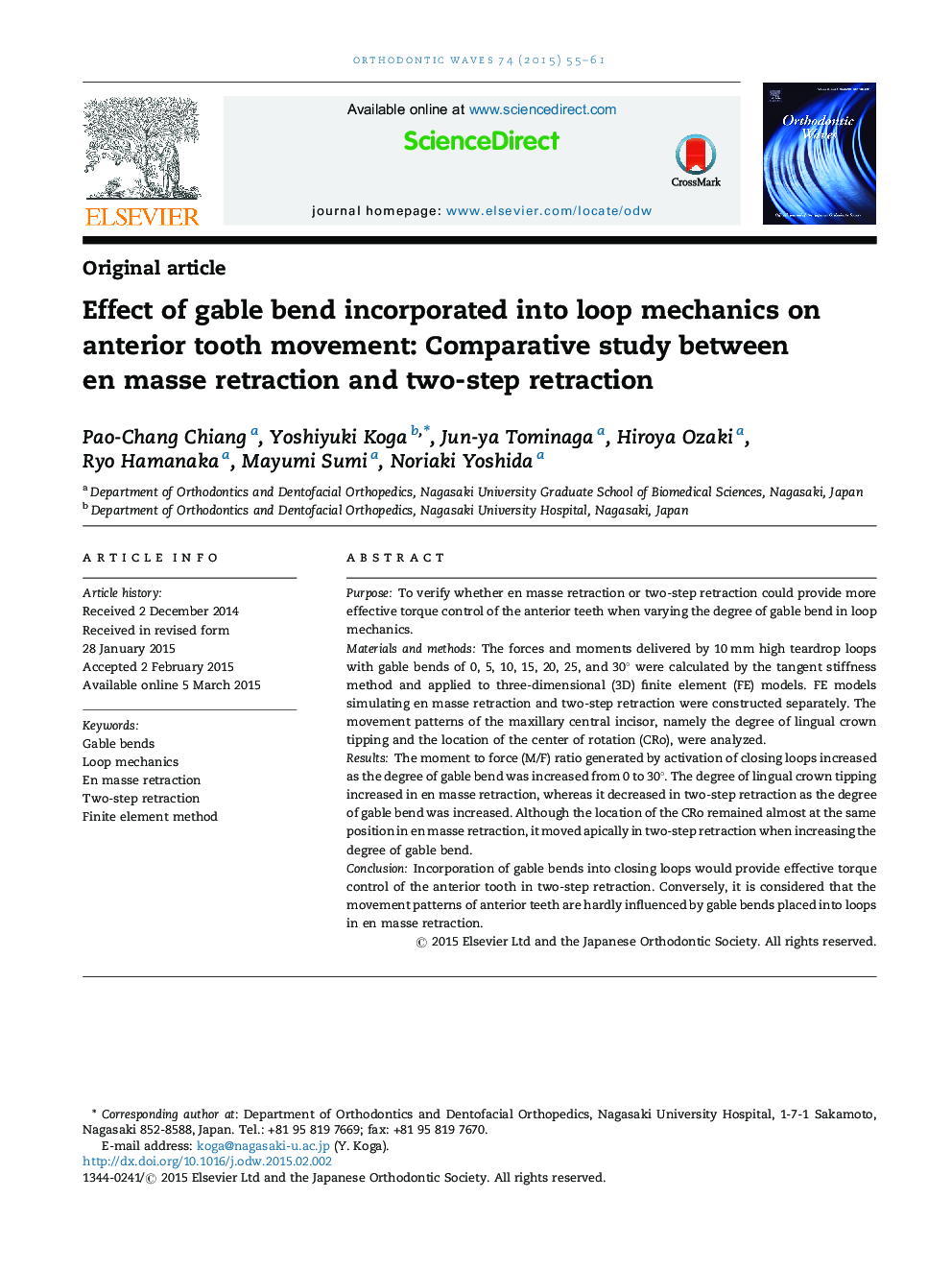| Article ID | Journal | Published Year | Pages | File Type |
|---|---|---|---|---|
| 3170299 | Orthodontic Waves | 2015 | 7 Pages |
PurposeTo verify whether en masse retraction or two-step retraction could provide more effective torque control of the anterior teeth when varying the degree of gable bend in loop mechanics.Materials and methodsThe forces and moments delivered by 10 mm high teardrop loops with gable bends of 0, 5, 10, 15, 20, 25, and 30° were calculated by the tangent stiffness method and applied to three-dimensional (3D) finite element (FE) models. FE models simulating en masse retraction and two-step retraction were constructed separately. The movement patterns of the maxillary central incisor, namely the degree of lingual crown tipping and the location of the center of rotation (CRo), were analyzed.ResultsThe moment to force (M/F) ratio generated by activation of closing loops increased as the degree of gable bend was increased from 0 to 30°. The degree of lingual crown tipping increased in en masse retraction, whereas it decreased in two-step retraction as the degree of gable bend was increased. Although the location of the CRo remained almost at the same position in en masse retraction, it moved apically in two-step retraction when increasing the degree of gable bend.ConclusionIncorporation of gable bends into closing loops would provide effective torque control of the anterior tooth in two-step retraction. Conversely, it is considered that the movement patterns of anterior teeth are hardly influenced by gable bends placed into loops in en masse retraction.
